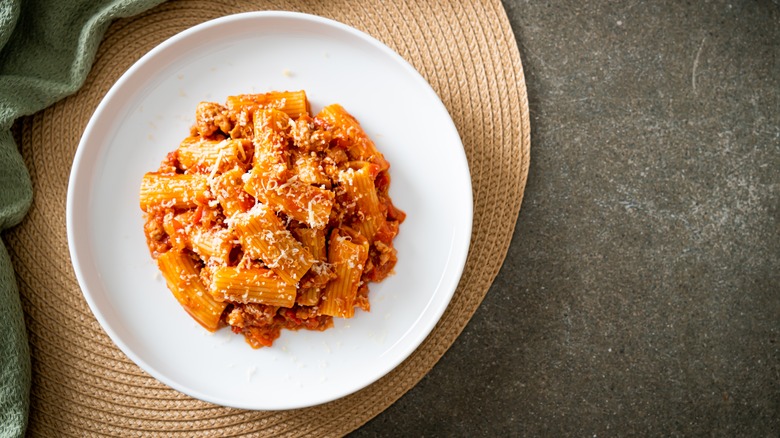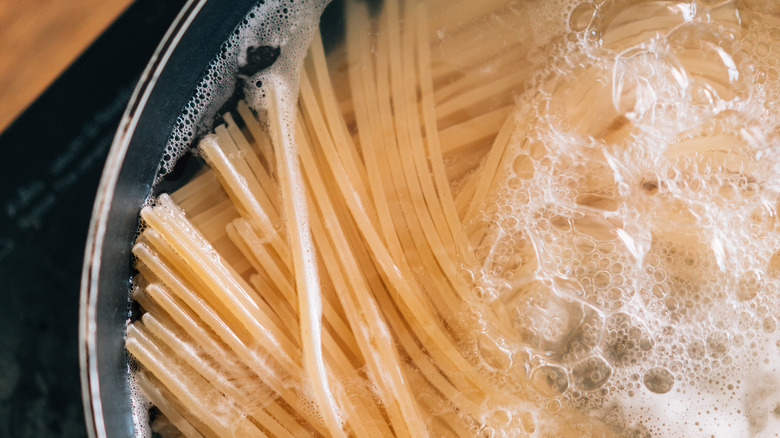Here's What Al Dente Pasta Actually Means
Have you ever heard someone say they don't like pasta? Probably not, because pasta is one of those rare foods everyone genuinely seems to like. No one's too picky for a bowl of pasta with butter and cheese. It's a true crowd-pleaser, in every sense of the word.
You can twirl up long, thin strands like angel hair, stab into thick, cylindrical tubes like rigatoni, or crack open a delicate, stuffed pocket of ravioli. You can cover it in a meaty bolognese, toss it in a creamy vodka sauce, or sprinkle endless amounts of cheesy goodness on top. You can make it the simplest meal of the week or the most sophisticated dish you've cooked all year. Pasta is a food crafted for beauty, no matter how you eat it. And a food this beautiful deserves to be cooked beautifully.
There's plenty of pasta terminology to wrap your head around, but one of the most important terms you can understand is al dente. Once you understand that, you'll understand how to cook your pasta correctly. You hear it at restaurants and see it in recipes all the time. But what does it actually mean?
Al dente is all about texture ... and teeth
In Italian, al dente means "to the tooth." MasterClass describes pasta as being al dente "when it feels tender with some resistance but no crunch" — firm to the bite yet still chewy. Al dente is that sweet spot of texture and doneness that will give you a not-too-hard, not-too-soft noodle. It will hold its shape and consistency when it goes on to be tossed and — this is important — most likely cooked more in whatever sauce you've prepared.
Not only does cooking your pasta al dente honor the pasta itself, but it also makes the pasta more nutrient-dense, explains La Cucina Italiana. Because al dente pasta retains more starches, allowing for slower digestion than if the starches were released into the boiling water, its glycemic index is lower than that of mushier pasta.
Good for the pasta, good for you. It's a win-win.
How to make sure your pasta is al dente
De Lallo has an essential tip to keep in mind. Assuming you'll continue to cook the pasta in some sauce or another pan after you pull it out of the boiling water, you'll need to remove it a few minutes before it reaches the recommended cook time. Otherwise, if you add already-al-dente pasta to your pan and finish it off in some sauce, you'll most likely overcook it. So, how do you know when your pasta has achieved almost-al-dente status?
Let's go back to the tooth thing — all you need to do is bite into it. The pasta company explains what to look for in a noodle: "a firm bite and a fleck of white at its center." This is a sure sign that it's nearly al dente, and once you're done preparing the pasta, it'll be cooked to perfection.
Eataly, too, suggests removing your pasta from the boiling water when it's "one minute away from being completely cooked." You can always cook pasta for longer — but you can't fix it once it's gotten mushy.


